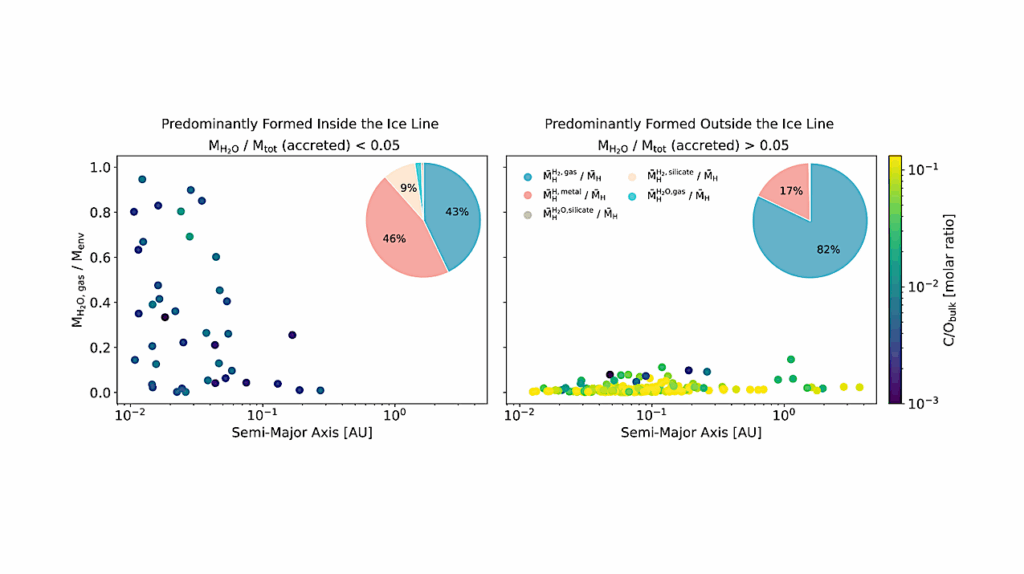Weak Seasonality on Temperate Exoplanets Around Low-mass Stars

Planets with non-zero obliquity and/or orbital eccentricity experience seasonal variations of stellar irradiation at local latitudes. The extent of the atmospheric response can be crudely estimated by the ratio between the orbital timescale and the atmospheric radiative timescale.
Given a set of atmospheric parameters, we show that this ratio depends mostly on the stellar properties and is independent of orbital distance and planetary equilibrium temperature. For Jupiter-like atmospheres, this ratio is ≪1 for planets around very-low-mass M dwarfs and ≳1 when the stellar mass is greater than about 0.6 solar mass. Complications can arise from various factors, including varying atmospheric metallicity, clouds, and atmospheric dynamics. Given the eccentricity and obliquity, the seasonal response is expected to be systematically weaker for gaseous exoplanets around low-mass stars and stronger for those around more massive stars.
The amplitude and phase lag of atmospheric seasonal variations as a function of host stellar mass are quantified by idealized analytic models. At the infrared emission level in the photosphere, the relative amplitudes of thermal flux and temperature perturbations are negligible, and their phase lags are closed to −90∘ for Jupiter-like planets around very-low-mass stars. The relative amplitudes and phase lags increase gradually with increasing stellar mass. With a particular stellar mass, the relative amplitude and phase lag decrease from low to high infrared optical depth.
We also present numerical calculations for a better illustration of the seasonal behaviors. Lastly, we discuss implications for the atmospheric circulation and future atmospheric characterization of exoplanets in systems with different stellar masses.
Xianyu Tan
Comments: 15 pages, 8 figures, The Astrophysical Journal, Volume 926, Issue 2
Subjects: Earth and Planetary Astrophysics (astro-ph.EP)
Cite as: arXiv:2203.10510 [astro-ph.EP] (or arXiv:2203.10510v1 [astro-ph.EP] for this version)
Journal reference: The Astrophysical Journal 926.2 (2022): 202
Submission history
From: Xianyu Tan
[v1] Sun, 20 Mar 2022 09:51:22 UTC (1,587 KB)
https://arxiv.org/abs/2203.10510
Astrobiology








